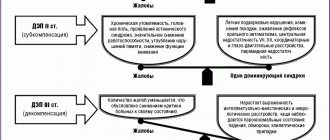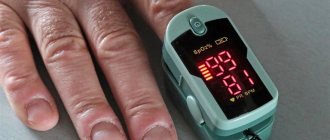Dual antiplatelet therapy for stable ischemic heart disease
The October issue of the journal AmHeartJ 2014 published the results of an evaluation of the use of dual antiplatelet therapy (DAT) in real clinical practice in 3691 patients with stable coronary artery disease included in a prospective registry. A total of 868 (24%) patients received DAPT. Factors positively associated with the prescription of DAPT were: angina attacks at the time of patient inclusion in the study, excess body mass index, history of myocardial infarction or myocardial revascularization from 1 to 3 years, multivessel coronary artery disease, implantation of drug-eluting stents, previous aortic surgery or peripheral arteries. Less commonly, DAPT was prescribed to older patients and those with low left ventricular ejection fraction. The incidence of the “composite endpoint” (cardiovascular death and/or myocardial infarction and/or stroke) at 2 years was recorded in 4.6% of patients who received only one antiplatelet agent and 5.5% in the DAPT group (p = 0.301) . Similar rates were observed after adjustment for factors influencing the prescription of antiplatelet therapy: 5.7% and 5.5% (P = 0.886). The incidence of bleeding events was similar between the groups. The authors concluded that a significant proportion of patients with stable CAD receive DAPT despite an increased risk of bleeding; the authors do not support the use of long-term DAPT.
Dual antiplatelet therapy in patients with stable coronary artery disease in modern practice: Prevalence, correlates, and impact on prognosis (from the Suivi d'une cohorte de patients COROnariens stables en region NORd-Pas-de-Calais study).
Lemesle G1, Lamblin N2, Meurice T3, Tricot O4, Lallemant R5, Nugue O5, Delomez M3, Equine O6, Tondeux S7, Bauters C2. Am Heart J. 2014 Oct;168(4):479-86. doi: 10.1016/j.ahj.2014.06.012.
Comments by MD, Professor Samorodskaya I.V.: This study reflects real clinical practice, based on modern recommendations, according to which patients with a high risk of cardiovascular events for a period of 1 to 12 months (depending on the clinical characteristics , comorbid pathology and type of treatment) DAT is indicated. According to this study, every fourth patient in real clinical practice may require DAPT, but this figure certainly depends on the characteristics of the patients and may differ significantly in the sample of Russian patients. The main problem with long-term use of DAPT is the increased risk of bleeding (gastrointestinal bleeding, hemorrhagic stroke), therefore, even if there were no differences in the incidence of bleeding between groups in this study, the authors do not support expanding the indications for DAPT.
Antiplatelet drugs (drugs that disrupt primary hemostasis)
Acetylsalicylic acid (ASA)
Egyptian papyri that date back to approximately 1550 BC. e., mention the use of a decoction of white willow leaves for many diseases. Hippocrates prescribed willow bark extract for headaches and fever. Willow is the first source of aspirin. Acetylsalicylic acid, the active ingredient in Aspirin, was synthesized from willow bark by Edward Stone in 1897. The age of medicine is shorter than the age of man and many of them quickly become obsolete. But Aspirin not only has not become obsolete over the last hundred years, it has also demonstrated new qualities. It seems to cure everything from colds to strokes.
Acetylsalicylic acid (ASA) has been the gold standard of antiplatelet therapy for many years. Aspirin in low doses (40-100 mg) irreversibly blocks the action of the enzyme cyclooxygenase-1 in platelets with a subsequent decrease in the formation of thromboxane A2, which is a powerful vasoconstrictor and proplatelet agent. Since ASA blocks COX-1 irreversibly, the antiplatelet effect persists throughout the life cycle of the platelet (7–10 days). The ability to irreversibly block platelet COX-1 distinguishes ASA from other non-steroidal anti-inflammatory drugs, the antiplatelet effect of which is short-term [1]. Considering the above, I would like to draw attention to the following clinical point.
What happens when a dentist prescribes an NSAID to a patient taking Aspirin? Data from epidemiological studies indicate that taking drugs from the NSAID group can cancel or significantly reduce the cardioprotective effect of aspirin.
Why? Aspirin and NSAIDs compete for the same substrate - COX 1. Therefore, with parallel administration, part of the platelets will be reversibly associated with NSAIDs, and the other part will be irreversibly associated with acetylsalicylic acid. After a few hours, platelets that were temporarily inactivated by NSAID drugs will restore their function and the patient will be left without cardioprotective action.
Which analgesics are contraindicated and which are the drug of choice in such patients can be learned in detail from my lectures.
In the RISK (Research on Instability in Coronary Artery Disease) study, when ASA was prescribed at a dose of 75 mg/day to patients with unstable angina, the risk of developing myocardial infarction decreased by 50% [2]. In another study in patients with acute MI, the effectiveness of ASA (160 mg/day) was comparable to the effectiveness of thrombolytic therapy [3].
Many patients receive dual antiplatelet therapy (Aspirin + Clopidogrel). In acute coronary syndrome, as well as after percutaneous coronary intervention (PCI) or stent placement, ASA is usually prescribed in combination with Clopidogrel. According to numerous studies, discontinuation of antiplatelet therapy in patients with an active stent is correlated with a 90-fold increase in the risk of stent thrombosis [4]. The literature has also documented thromboembolic complications with a fatal outcome due to unauthorized discontinuation of anticoagulant/antiplatelet drugs by the dentist before surgery. The risk of bleeding increases dramatically with dual antiplatelet therapy during surgery.
Anticoagulants (drugs that disrupt secondary hemostasis)
Warfarin
In addition to antiplatelet agents, the process of thrombus formation can be influenced by anticoagulants - drugs that prevent the activation of plasma coagulation factors. Studies performed before the widespread introduction of anticoagulant therapy demonstrated a high incidence of thrombus formation (up to 50%) in the left ventricular cavity in the post-infarction period [5]. The cause of blood clots is not the activation of platelets, but a local violation of myocardial contractility (violation of the rheological properties of blood), which in turn activates plasma coagulation factors. In simple words, platelets have nothing to do with it, and antiplatelet agents will not help. Indications for anticoagulant therapy: prevention of arterial and venous embolism of cardiogenic origin in patients with atrial fibrillation, after heart valve replacement, after extensive transmural MI in patients with parietal thrombosis of the left ventricle, etc.
Vitamin K plays an important role in the production of many plasma coagulation factors. Warfarin blocks the synthesis of vitamin K-dependent blood coagulation factors in the liver, namely factors II, VII, IX and X. The concentration of these components in the blood decreases and the clotting process slows down.
Warfarin has a narrow therapeutic window and requires individual dose selection. It is quite difficult to maintain optimal levels of the drug in the blood during long-term outpatient treatment. It interacts with many medications. A large group of pharmacological drugs can enhance or weaken the effect of Warfarin. The interaction of Warfarin with green vegetables containing large amounts of vitamin K reduces its effectiveness. All this dictates the need for regular monitoring of anticoagulants, which makes their use extremely difficult in areas where such monitoring is not organized or is of poor quality.
To monitor the effect of indirect anticoagulants, INR (International Normalized Ratio) or international normalized ratio (MHO) is usually used. The recommended INR interval for patients with CVD varies depending on the disease, but all heart diseases are in the range of 2-3.5. INR (INR) beyond the recommended level sharply increases the risk of hemorrhagic complications.
New generation anticoagulants
Rivaroxaban (Xarelto), Apixaban (Eliquis), and Dabigatran (Pradaxa)
Despite the fact that Warfarin has been a popular oral anticoagulant for more than 50 years, it has many limitations, such as high individual sensitivity and unpredictability of the anticoagulant effect, drug interactions, a narrow therapeutic range, the need for dose selection and constant monitoring of the INR. All this sharply reduces adherence to treatment and increases the risk of severe hemorrhagic complications.
Therefore, in recent years, the FDA has approved new anticoagulants that are safer and have a wider therapeutic range than their predecessors.
Today, a new generation of anticoagulants, which successfully replace Warfarin in many situations (cardiology, prevention and treatment of deep vein thrombosis of the extremities, in the treatment and prevention of strokes), allows us to get away from the problem of INR control. We are talking about three main drugs: Rivaroxaban (Xarelto), Apixaban (Eliquis) and Dabigatran (Pradaxa).
Factor Xa inhibitors (Eliquis and Xarelto) bind directly to the active site of factor Xa, which leads to blocking of the general coagulation pathway. This results in decreased thrombin formation, which in turn inhibits clot formation and platelet activation.
Direct thrombin inhibitors (Pradaxa) bind specifically and reversibly to the active site of thrombin. Due to thrombin inhibition, fibrin clot formation and platelet aggregation are reduced.
The standard test for monitoring patients on warfarin is the prothrombin time or INR, while the standard test for monitoring patients on heparin is the activated partial thromboplastin time or aPTT. Unfortunately, to date there are no laboratory tests to monitor patients taking NOACs. Currently, routine laboratory monitoring in patients taking new oral anticoagulants (NOACs) is not accepted due to the proven effectiveness of fixed doses. Therefore, the real degree of hypocoagulation in such patients is almost impossible to determine, which extremely complicates management tactics during surgical manipulations in the oral cavity. NOACs were developed as a physician- and patient-friendly alternative to vitamin K antagonists (VKAs) that did not require regular laboratory visits.
DESCRIPTION OF THE INFORMATION WE COLLECT AND HOW WE USE IT
1. General information
Like many commercial organizations, we monitor use of this site by collecting aggregate information through cookies (see below). As a rule, we keep statistics on the number of visits to the site, each web page and register the name of the original domain of the Internet service provider whose services the visitor uses. The information obtained allows us to make conclusions about the use of the site by the visitor, and may also be transferred to other companies of the Group and other third parties.
2. Personal information
When you register as a user on our website or fill out an online form (for example, to receive email updates), we collect personal information about you, such as your first and last name, email address, country of residence, and other information you provide voluntarily.
We are committed to improving the content and functionality of our site. Therefore, through cookies (and other similar technologies) we collect information about your use of this site (see below). We may also monitor navigation and use of the site in order to improve its design and structure, taking into account user preferences by tailoring content. By doing this, we strive to make the site more user-friendly. We may also conduct statistical analyzes of our user accounts to determine the proportion of active users, the frequency of their visits, and the number of other sites they are registered with.
In some cases, we may receive information about your opinions, for example when you send us feedback or ask questions, as well as information about you from other publicly available sources, which we will supplement with information we already have in order to improve the service to suit your specific requirements. user.
If you provide information about another person, such as your colleague, you confirm that you are acting on the instructions of such person and provide his consent to the processing of his personal information, including important personal information, and also confirm that you have provided such person with information about us and about the purposes (in accordance with this Privacy Policy) for which personal information will be used.
We may provide personal information upon request to comply with legal requirements.
You consent to our transfer of information to countries or jurisdictions that do not provide legal protection for data protection to the same extent as your country. When we make such a transfer, we are committed to ensuring that your information is adequately protected.
All personal data provided to AstraZeneca Pharmaceuticals LLC, as well as companies included in the group (including those entered on the website), can be used and processed, in addition to the above, also for the purposes of:
• providing scientific medical and any other information about AstraZeneca products, as well as materials in written, printed, electronic, audio, video, oral and any other appropriate form, via email, regular and courier mail, telephone calls, SMS messages , messages on social networks on the Internet, in person and/or in any other appropriate way;
• invitations to scientific, educational and other events aimed at improving the professional level of relevant specialists, in all the above ways and in all the above forms;
• creating a database of persons who provided their personal data.
The person who voluntarily provided his personal data and information is notified and consents to the processing by AstraZeneca Pharmaceuticals Limited Liability Company, all other companies included in the group, as well as any third parties to whom AstraZeneca Pharmaceuticals LLC transfers the relevant personal data for the purposes specified above, and subject to the obligatory condition that these persons ensure the security of the personal data provided above, including collection, recording, systematization, accumulation, storage, clarification (updating, changing), extraction, use, transfer (distribution, provision, access, including cross-border transfer), depersonalization, blocking, deletion, destruction with or without the use of automation tools. Also, the Person who voluntarily provided his personal data and information is notified and agrees that during the cross-border transfer of his personal data, recipients of such data may be located in foreign countries that do not provide adequate protection of the rights of personal data subjects. Operators, at the same time, undertake to take all reasonable and appropriate actions to ensure the confidentiality and security of any Personal Data transferred to the territory of any foreign countries.
This consent to the processing of personal data is given for an indefinite period and can be withdrawn by sending a written application to the site administration. I hereby acknowledge and confirm that I have read and agree with the rights and obligations in accordance with the Federal Law of the Russian Federation of July 27, 2006 No. 152-FZ “On Personal Data,” including the procedure for revoking consent to the processing of personal data.
Filling out the form for providing Personal Information implies agreement that any personal data provided by filling out this form can be used, taking into account the consent provided, in accordance with the requirements of the Federal Law of the Russian Federation of July 27, 2006. No. 152-FZ “On Personal Data” and stored for ten years at (125284, Moscow, Begovaya St., 3, building 1) for registration and response to this request for scientific medical information.
Dental appointment
Factors influencing decision making:
- the scale of the planned operation;
- degree of hypocoagulation (monotherapy, dual antiplatelet therapy, Heparin, Warfarin, NOAC, etc.);
- topographic anatomy of the operated area.
Oral surgeries with the highest risk of possible bleeding include:
- Sinus lift.
- Invasive procedures in the floor of the mouth.
- Removal of impacted and dystopic wisdom teeth.
Assessing the risk of thromboembolism (depends on the disease and requires consultation with your doctor).









